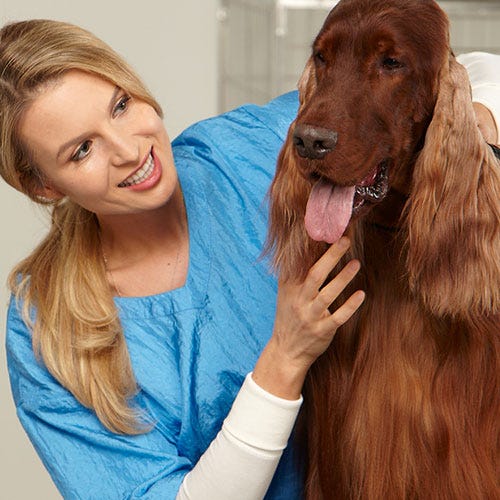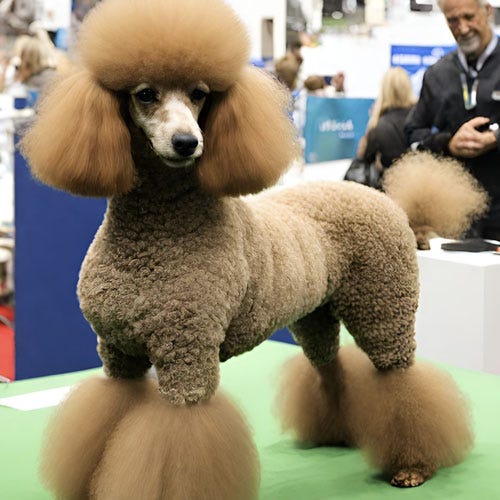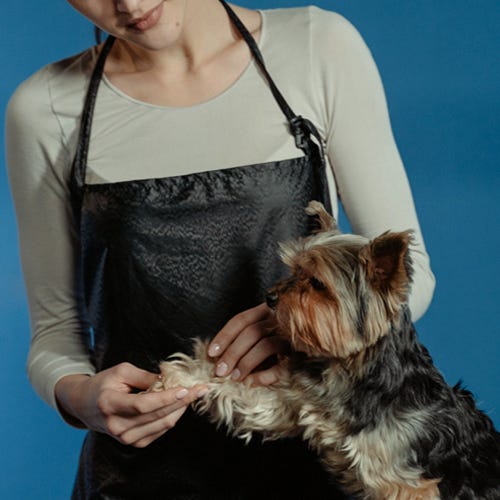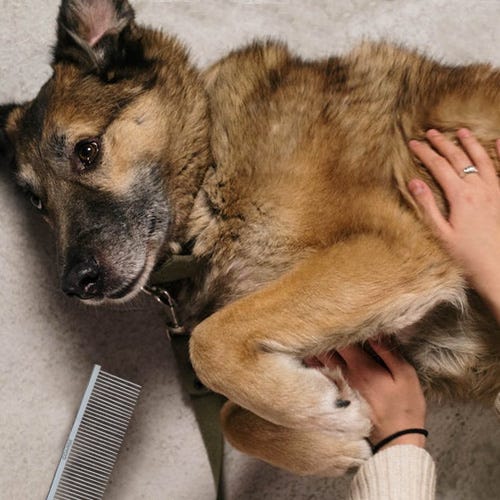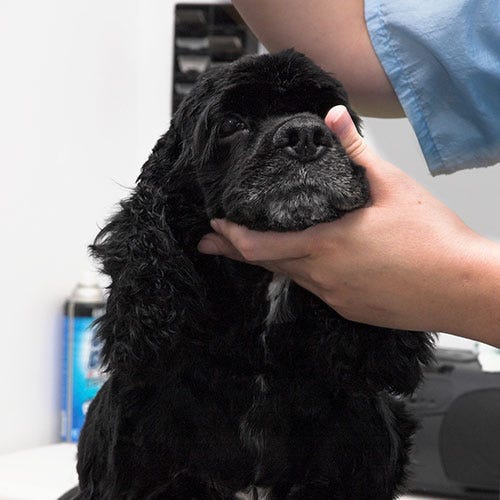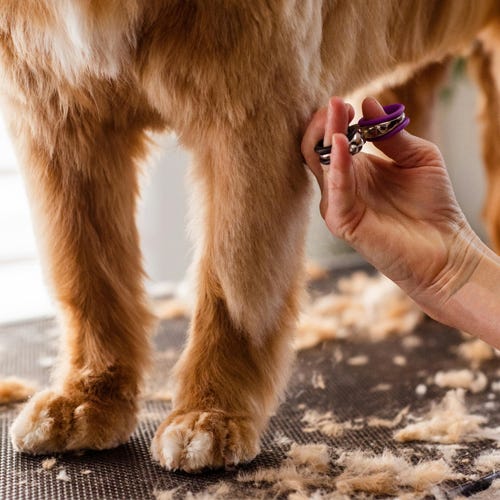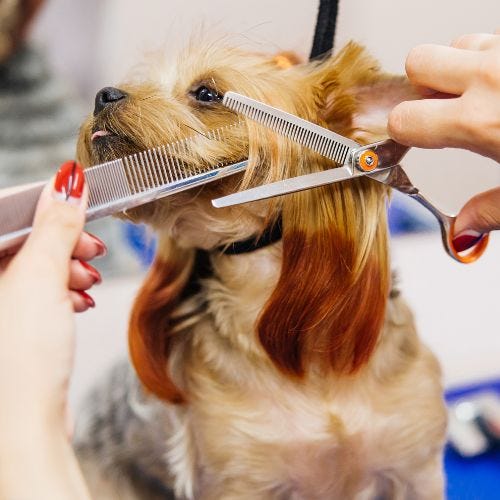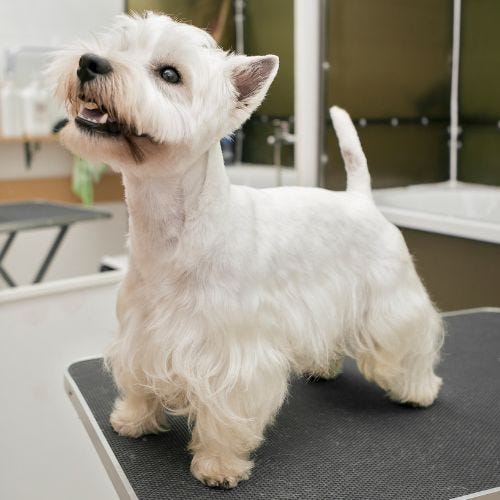The dog on your grooming table is excited to be there, wagging, dancing, and panting. In your face. And it's breath? Strong enough to peel paint.
Many dogs have the beginnings of dental disease as early as age three. This seems to be more typical in small breeds, but dental disease can be found in all breeds and sizes of dogs. Early signs are a buildup of plaque on the teeth and unpleasant-smelling breath. Left untreated, the dog can experience pain, and the bacteria in the mouth can circulate through the pet's body, causing damage to vital organs.
Pet groomers are frequently asked to brush the teeth of the animals they groom. While doing so probably does no harm to the pet, we do run the risk of lulling pet owners into a sense of complacency, thinking that they are taking adequate care of their pet's dental needs by having their teeth brushed only at the interval when the pet is groomed. Brushing the teeth every six to eight weeks will not ensure a healthy mouth.
Veterinarians recommend that dog's teeth be brushed daily to help prevent dental disease from taking hold. As groomers, we should check the pet's teeth and note their appearance at each visit. We can (and should!) recommend products and even demonstrate to our customers how to brush their dog's teeth well and try to impress upon them the importance of doing so daily. We want to avoid having a customer blame us if their pet develops oral problems, suggesting that we didn't do our job correctly when their dog is diagnosed with dental disease.
Most groomers have experienced working on a dog with advanced dental disease who is unenthusiastic about handling its face during grooming. This can vary from avoidance to lashing out with an attempted bite because their mouth hurts. Upon peeking at the teeth, we often see a deep buildup of dark plaque on all the tooth surfaces and reddened gums. It can be a source of severe frustration for us to know that the dog is in pain when owners neglect to have the issue treated by their veterinarian.
There is a new product on the market called Orastripdx. In the December 2023 edition of Groomer to Groomer Magazine, Kara M. Burns writes, "A thiol test is a tool that can be used on awake animals that provides a fast, objective assessment of the pet's periodontal health, allowing for a team approach to oral health. Simply slide the strip along the upper gumline of every canine or feline pet presenting for their grooming appointment, and if the strip changes color to any shade of yellow, infection is present."
This tool would enable groomers to offer evidence quickly, safely, and easily to their customers that their pet needs veterinary assistance. The product cost could be offset by adding a small fee to the grooming service.
As grooming professionals, we focus on the pet's skin and coat. Still, we often notice things about their general health before their owner (who may not know what to look for) or veterinarian (who sees the pet less frequently than the groomer, might.) Sometimes, finding a way to communicate our concerns to the pet owner in a way that is taken seriously is a challenge. This new product could help change that when dealing with dental disease.


